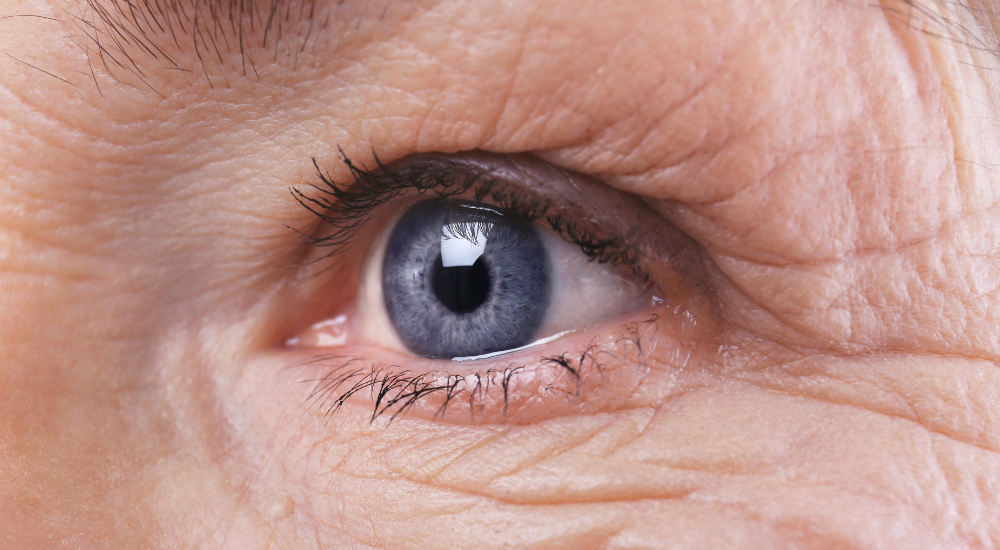Cataracts are a frequent age-related disorder in which the eye’s natural lens becomes hazy and less translucent. While cataracts may not affect your eyesight at first, if left untreated, they can spread and interfere with your ability to do daily tasks. It is usual for the level and quality of vision achieved to be reduced due to the cataract. We can quickly restore youthful vision at Optical Express by replacing the hazy natural lens with a superior synthetic lens in a simple operation. Long-sightedness, short-sightedness, astigmatism, and reading vision can all be corrected with this quality lens, minimizing the need for glasses and contact lenses.
CataractSurgery:
The majority of cataract procedures take less than 10 minutes. After breaking up the cataract with a laser, the surgeon removes the clouded natural lens and replaces it with an intraocular lens implant, which is an artificial lens. The procedure, also known as cataract surgery, typically takes less than 15 minutes and is performed under local anesthesia, making it almost painless.
While the operation is short, it may take a few days or weeks for your eyes to adjust to the synthetic lens that has been utilized to replace your natural lens. During this recovery time, it is critical that you follow your clinical care team’s instructions and properly care for your eyes since improper post-surgery care can result in a range of short and long-term complications.
You can do several things to care for your eyes and guarantee a healthy healing process while recuperating from surgery. Following cataract surgery, there are a few things you should consider ad a few to avoid.
To help you prepare, we’ve put up a thorough guide that covers everything you need to know about the dos and don’ts after cataract surgery. The day has finally arrived, and you are about to undergo cataract surgery, a safe and effective procedure. For most patients, cataract surgery recovery is quick and uneventful.
What’s IOL?
- Intraocular Lenses are given to almost everyone who has had cataract surgery IOL.These lenses aid inappropriately concentrating light on the This lens becomes a permanent component of your eye and does not require additional care.
- IOLscome in various shapes and sizes, and your eye doctor will determine which one is ideal for you. However, the eye expert typically talks with you about your options before the procedure and then selects which lens will work best for
- IOLscome in various shapes and sizes, and your eye doctor will determine which one is ideal for you. However, the eye expert typically talks with you about your options before the procedure and then selects which lens will work best for
- Silicone, acrylic, and plastic are among the materials used in IOLs. Some IOLs can blockUV radiation. Rigid plastic lenses are used in some cases. Typically, these plastic lenses are inserted through an incision that requires sutures to close. Some IOLs, on the other hand, are incredibly flexible and require only a minor incision with a few or no sutures. The eye surgeon folds such lenses and inserts them into the empty capsule to replace the standard eye lens during The folded IOL unfolds and fills the vacant space once inside.
IOLs are available in a variety of shapes and sizes.
Fixed-focusmonofocal:
For distance vision, this lens has a single focus strength. Reading glasses are required for precision activities such as reading.
Monofocalaccommodating-focus:
This lens has a single focusing strength, but it can adjust with eye muscle movement and shift focus.
Multifocallenses:
These are similar to progressive lenses or bifocal glasses in that they have many focal points. The lens features different focusing strengths, allowing for vision in close, medium, and far distances.
ToricLenses:
These lenses are mainly used to treat astigmatism.
DOsafterCataractsurgery:
- Aftercataract surgery, there are a few things you should
- Bringa friend or family member with you to the hospital and have them drive you home following
- Wearthe protective eye patch that your surgeon has given
- Asdirected by your surgeon, utilize the eye drops they have given
- Whenbathing, showering, or washing your hair, prevent getting water in your eyes by wearing the protective
- Try to avoidswimming and other water-based activities for at least one month.
- Whenyou’re outside, don’t forget to put on your
- Take it easy during the first several days and avoid any physical activity, includingsports, exercise, and jobs that require bending down, such as vacuuming and
Don’tafterCataractsurgery:
- Donot rub or hurt your eyes, which may cause discomfort or tear
- Donot allow soap, shampoo, or other chemicals to getting entry into your
- Donot drive until your doctor gives you the all-clear.
- Donot do any strenuous exercise or household work.
- Donot wear eye make-up for at least four weeks, which may cause allergies to the eyes.
- Donot fly without first consulting your
- Donot do any strenuous activity or
You might consider hiring someone to look after you until your vision improves, especially if your other eye fails. If you work, the nature of your job and whether or not you need new glasses will determine how soon you can return.
WhenReturnToYourHome?
- Whenmany patients return home, they are still sleepy, so they sleep for a few This is the best option because it gives your eyes a chance to rest after surgery.
- Willbe your eyes shielded with a protective When you should get it removed, the surgeon will advise you.
- Patientsmay be able to remove the shield after several hours, but they must tape it back in place at night or if they take a nap during the day. Must do this for several days to preserve the eyes while they
- Antibiotic eye drops will be given to you to prevent infection, and another prescriptioneye drop will be given to you to relieve You apply both drops many times per day for roughly a week.
- Some people have more severe inflammation, and anti-inflammatory drops may berequired for up to a It’s critical to follow the directions for both slides exactly.
- Whilemost patients only experience minor discomfort following surgery, if necessary, a patient can take an oral pain killer such as acetaminophen.
Aftercataractsurgery,howshouldyouuseeyedrops?
Your surgeon will prescribe you eye drops, and you must use them exactly as directed. Your doctor will inform you precisely what you should and shouldn’t do following cataract surgery as part of your follow-up, and unless they tell you otherwise, it will most likely be to:
- Beforeputting the drops in, make sure you wash your hands well
- Donot use your eye drops on the operated They should not use them on an untreated eye unless your surgeon has instructed this.
- Afteryour operation, begin utilizing the eye drops the following
- Continueto use the eye drops according to your surgeon’s instructions until they advise you to
- Keepthe eye drops away from children’s reach, and don’t let anyone else use
Howtotakecareofyoureyes?
- Allowsome water to cool once it has been brought to a
- Pleasewash your
- Ina bowl of cool boiled water, soak cotton wool or clean
- Wipeyour eyelids gently from the inside (near your nose) to the outside
- Wipethe inside of your eyelids but not the interior of your
- Donot use water to clean your
- Donot put any pressure on your
- Youshould clean your eyes twice a day for the first two weeks because the drops and the healing process can cause mild
Followingcataractsurgery,you’llneedtorecover:
Although the list of dos and don’ts following cataract surgery may appear to be lengthy, employing common sense and following your surgeon’s recommendations will ensure the best possible outcome from your procedure.
In most cases, it will cure your eye in four to six weeks, which is a relatively short period before you may resume your typical activities. And a routine in which you’ll be able to see far better than before.
Within a few hours of cataract surgery, you should be able to do the following:
- Utilizinga computer
- Observingtelevision, not for long hours
- Showering
The points presented here are meant to serve as a quick reference guide to the steps you should take during your rehabilitation.
Conclusion:
The most excellent method to ensure a quick recovery is to follow the doctor’s advice. Follow your doctor’s post-operative instructions since they are the most acceptable person to assess your condition and recommend the best course of action.
In the RK Eye center, cataract surgery is the most prevalent procedure. It’s also one of the safest surgical treatments available, with a low risk of serious complications. More individuals have already benefited from its life-changing benefits, so take the first step toward better eyesight.







